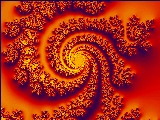 Modeling human
learning on visualmotor tasks
Modeling human
learning on visualmotor tasks Modeling human
learning on visualmotor tasks
Modeling human
learning on visualmotor tasks
The affordability of computing power and the ready availability of non-invasive recordings of visualmotor activity during task performance has brought a brand new paradigm for task training within our reach. We have developed algorithms that allow machines to learn models of humans acquiring a task, based on real-time analysis of their visualmotor activity. For example, our models track shift in strategy based purely on the visualmotor performance data. Indeed, our larger goal is to provide a computational microscope for human learning by extracting and interpreting objective sources of performance data.
Our approach offers a scalable solution that harnesses the power of computing to fundamentally change engineering practice in training, and to increase our scientific understanding of human learning.